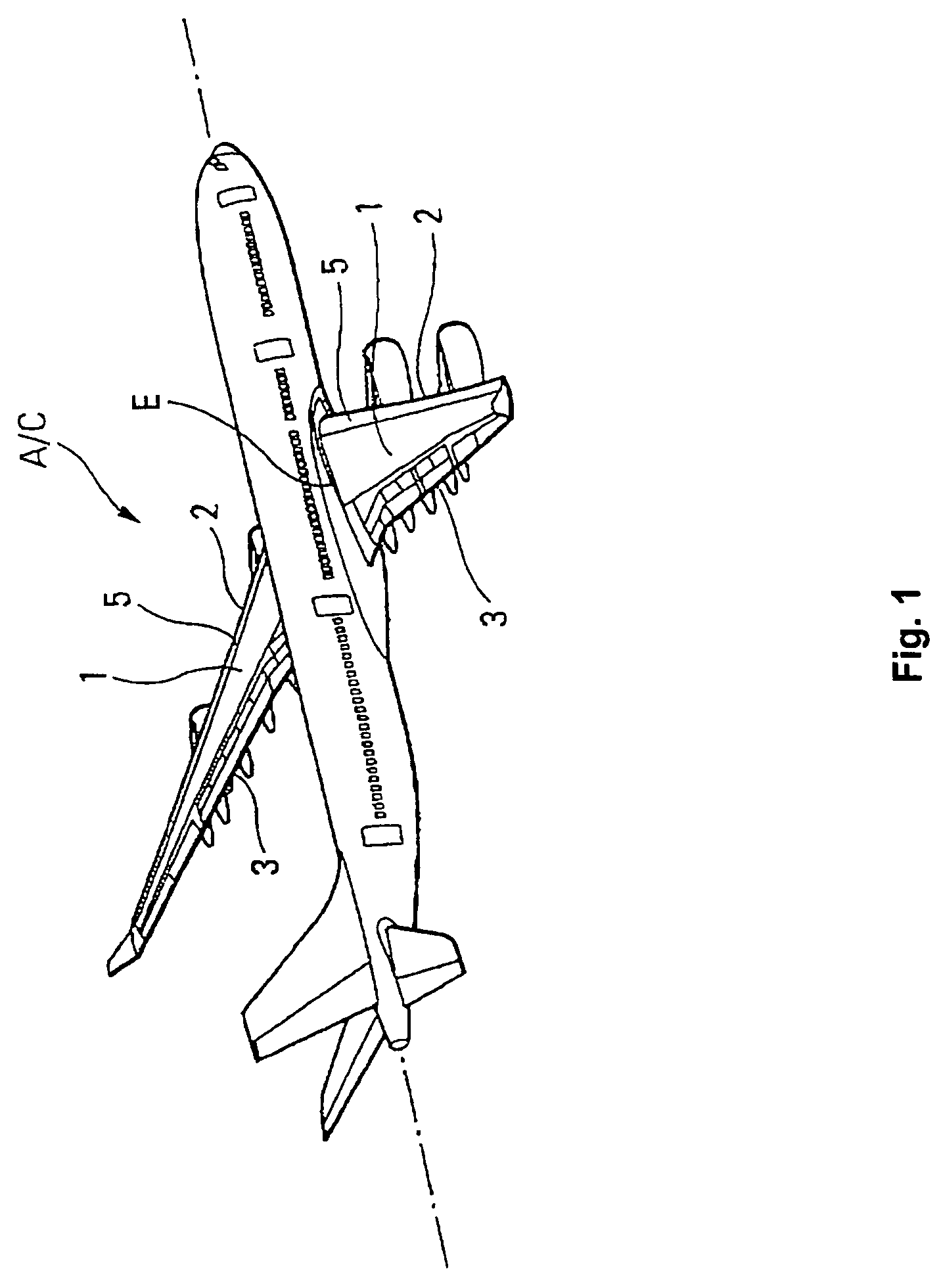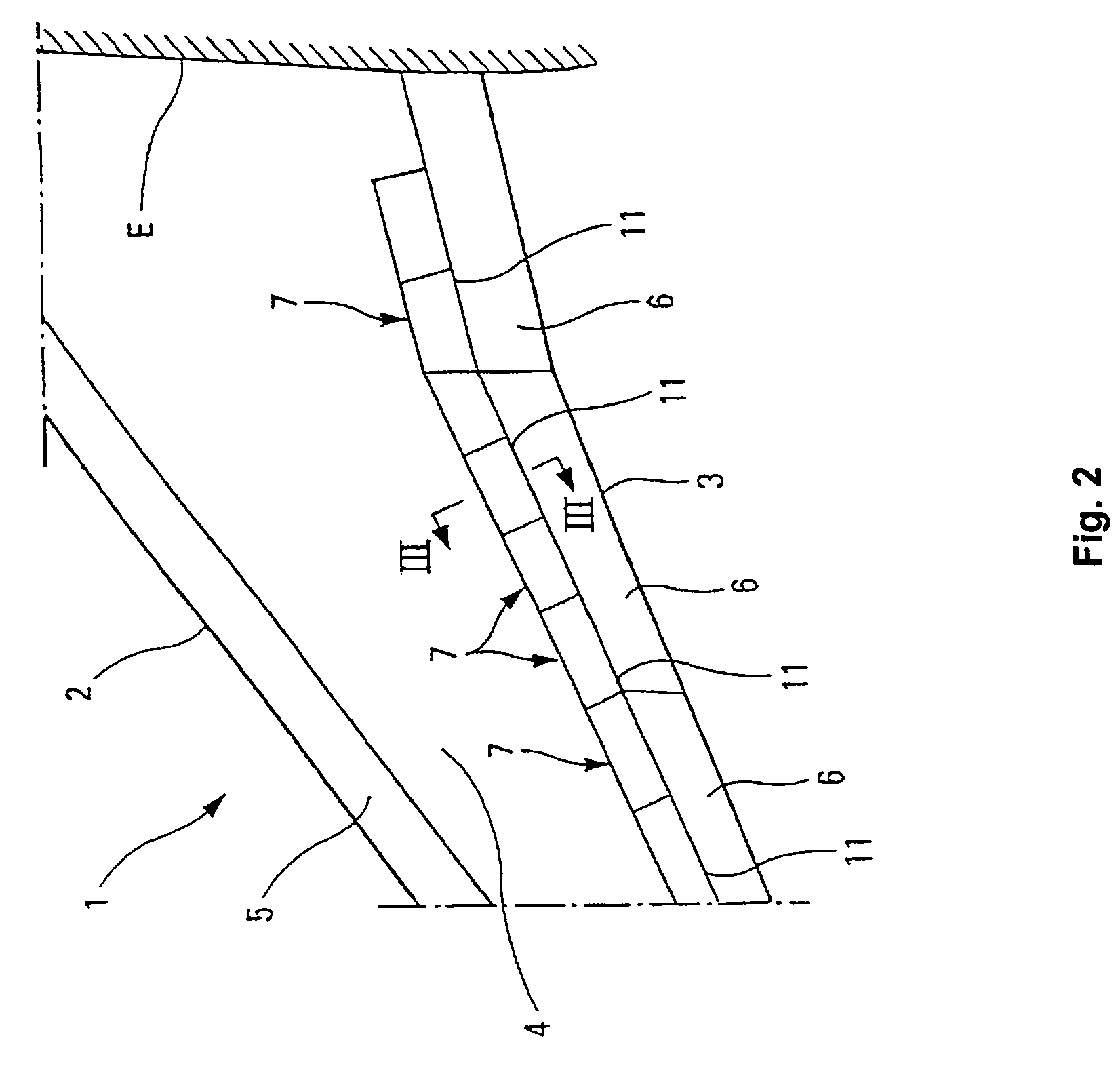Procedure and device for improving the maneuverability of an aircraft during the approach to landing and flare-out phases
- Summary
- Abstract
- Description
- Claims
- Application Information
AI Technical Summary
Benefits of technology
Problems solved by technology
Method used
Image
Examples
Embodiment Construction
[0067]The A / C jumbo jet shown in FIG. 1 has two wings 1.
[0068]As shown at a larger scale in FIG. 2, each wing 1 includes a leading edge 2, a trailing edge 3, a wing top 4 and a wing root E.
[0069]The leading edge 2 is formed by at least one high lift leading edge slat 5.
[0070]The trailing edge 3 of wing 1 is formed by the juxtaposition of the trailing edges of a number of adjacent trailing edge flaps 6.
[0071]In the top side 4 of the wing, upstream of the trailing edge flaps 6 (with respect to the aerodynamic flow over the wing 1), is located a number of deflecting flaps 7, whose plane form is that of a rectangle or of a rectangular trapezoid.
[0072]As is shown in FIG. 3, each deflecting flap 7 is hinged, on the side of its leading edge 8, to the structure 9 of wing 1 around an axis 10, parallel to the leading edge 8.
[0073]In the retracted position represented in FIGS. 2 and 3, the trailing edge 11 of each deflecting flap 7 is supported by a trailing edge flap 6 and the top side 12 of ...
PUM
 Login to View More
Login to View More Abstract
Description
Claims
Application Information
 Login to View More
Login to View More - R&D
- Intellectual Property
- Life Sciences
- Materials
- Tech Scout
- Unparalleled Data Quality
- Higher Quality Content
- 60% Fewer Hallucinations
Browse by: Latest US Patents, China's latest patents, Technical Efficacy Thesaurus, Application Domain, Technology Topic, Popular Technical Reports.
© 2025 PatSnap. All rights reserved.Legal|Privacy policy|Modern Slavery Act Transparency Statement|Sitemap|About US| Contact US: help@patsnap.com



